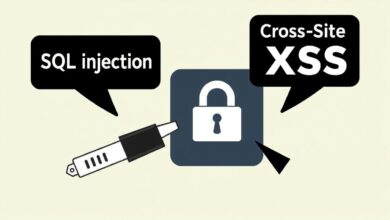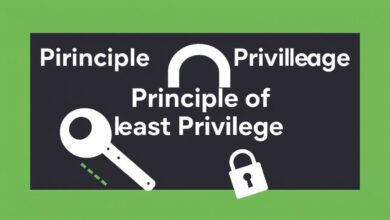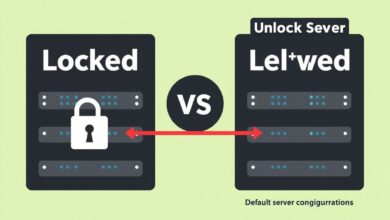Understanding SSL/TLS Certificates: Why HTTPS is Non-Negotiable for Your Server Security

In today’s digital landscape, website security is paramount. Users share sensitive information online daily, from login credentials to payment details. Ensuring this data is protected during transit is crucial, and that’s where SSL/TLS certificates and HTTPS come into play. If you run a website, understanding why HTTPS matters isn’t just recommended; it’s essential for protecting your users, your reputation, and even your search engine rankings.
The internet largely runs on the Hypertext Transfer Protocol (HTTP). However, standard HTTP connections are unencrypted, meaning any data exchanged between a user’s browser and your server can potentially be intercepted and read by malicious actors. This is where the ‘S’ in HTTPS (Hypertext Transfer Protocol Secure) makes all the difference. HTTPS uses SSL/TLS protocols to create a secure, encrypted channel for communication.
What Exactly Are SSL/TLS Certificates?
At the heart of HTTPS lies an SSL/TLS certificate. SSL (Secure Sockets Layer) is the original protocol, while TLS (Transport Layer Security) is its more modern and secure successor. Though the term SSL is still widely used, most secure connections today utilize TLS. These digital certificates perform two critical functions:
- Authentication: An SSL/TLS certificate verifies that the server a user is connecting to is genuinely who it claims to be. When you visit an HTTPS site, your browser checks the server’s certificate, which has been issued and verified by a trusted third party known as a Certificate Authority (CA). This helps prevent users from connecting to imposter sites designed for phishing or distributing malware.
- Encryption: Once the server’s identity is verified, the certificate enables the encryption of data exchanged between the client (browser) and the server. This means information like usernames, passwords, credit card numbers, and personal details are scrambled and become unreadable to anyone trying to eavesdrop on the connection.
Think of it like sealing a letter in a tamper-proof envelope before sending it. Only the intended recipient (the server or the browser) has the key to decrypt and read the contents.
How HTTPS Establishes a Secure Connection
When your browser connects to a server using HTTPS, a process called the “SSL/TLS handshake” occurs behind the scenes:
- Your browser requests a secure connection from the server.
- The server responds by sending its SSL/TLS certificate and public key.
- Your browser verifies the certificate with the issuing Certificate Authority.
- If valid, the browser and server securely negotiate encryption keys to use for the session.
- Once established, all subsequent communication is encrypted.
Why HTTPS Driven by SSL/TLS Certificates is Crucial
Implementing HTTPS via valid SSL/TLS certificates offers numerous benefits that are vital for any modern website:
1. Protecting Sensitive Data
This is the most fundamental reason. If your website handles any form of sensitive user input – logins, contact forms, payment processing, personal profiles – encryption is non-negotiable. HTTPS ensures this data is protected from man-in-the-middle attacks, where attackers intercept data traveling over insecure networks (like public Wi-Fi).
2. Building User Trust and Credibility
Web browsers provide clear visual cues for secure connections. Google Chrome, Firefox, and others display a padlock icon in the address bar for HTTPS sites. Conversely, they actively warn users when connecting to non-secure HTTP pages, often displaying “Not Secure” warnings. These warnings deter users, increase bounce rates, and damage your site’s credibility. A visible padlock reassures visitors that their connection is private and secure.
[Hint: Insert image comparing browser address bar for HTTP vs HTTPS sites here]3. SEO Advantages
Google officially confirmed HTTPS as a lightweight ranking signal back in 2014. While content quality remains king, having a secure site can provide a slight edge over non-secure competitors in search results. Furthermore, as user experience is a key ranking factor, the trust and lower bounce rates associated with HTTPS indirectly benefit your SEO efforts. Many sources, like Google’s Search Central Blog, emphasize the importance of HTTPS.
4. Preventing Website Tampering
Besides encrypting data, HTTPS helps ensure data integrity. It prevents attackers from modifying the content being transferred between the server and the browser without detection. This stops malicious actors from injecting ads, malware, or tracking scripts into your website as it’s delivered to the user.
5. Meeting Compliance Requirements
Certain industry regulations, like the Payment Card Industry Data Security Standard (PCI DSS), mandate the use of encryption for transmitting sensitive data like credit card information. Using HTTPS is often a baseline requirement for compliance.
Making the Switch to HTTPS
Obtaining and installing an SSL/TLS certificate is easier and more affordable than ever. Many hosting providers offer free certificates through initiatives like Let’s Encrypt, alongside paid options offering higher levels of validation (Organization Validated – OV, Extended Validation – EV). The process typically involves generating a Certificate Signing Request (CSR), validating your domain ownership, and installing the certificate on your web server. For more information on servers, check out our article on what a web server is.
In conclusion, HTTPS powered by SSL/TLS certificates is no longer an optional extra; it’s a fundamental requirement for any server hosting a website or application. It protects your users, builds trust, enhances security, boosts SEO, and ensures the integrity of your online presence. If your server isn’t already using HTTPS, making the switch should be a top priority.




